Reuse or replace? Strategic planning for ageing estates
We explore the challenges presented by an aging healthcare estate and the role of strategic estate planning in deciding if we should build new and replace or reuse and update.
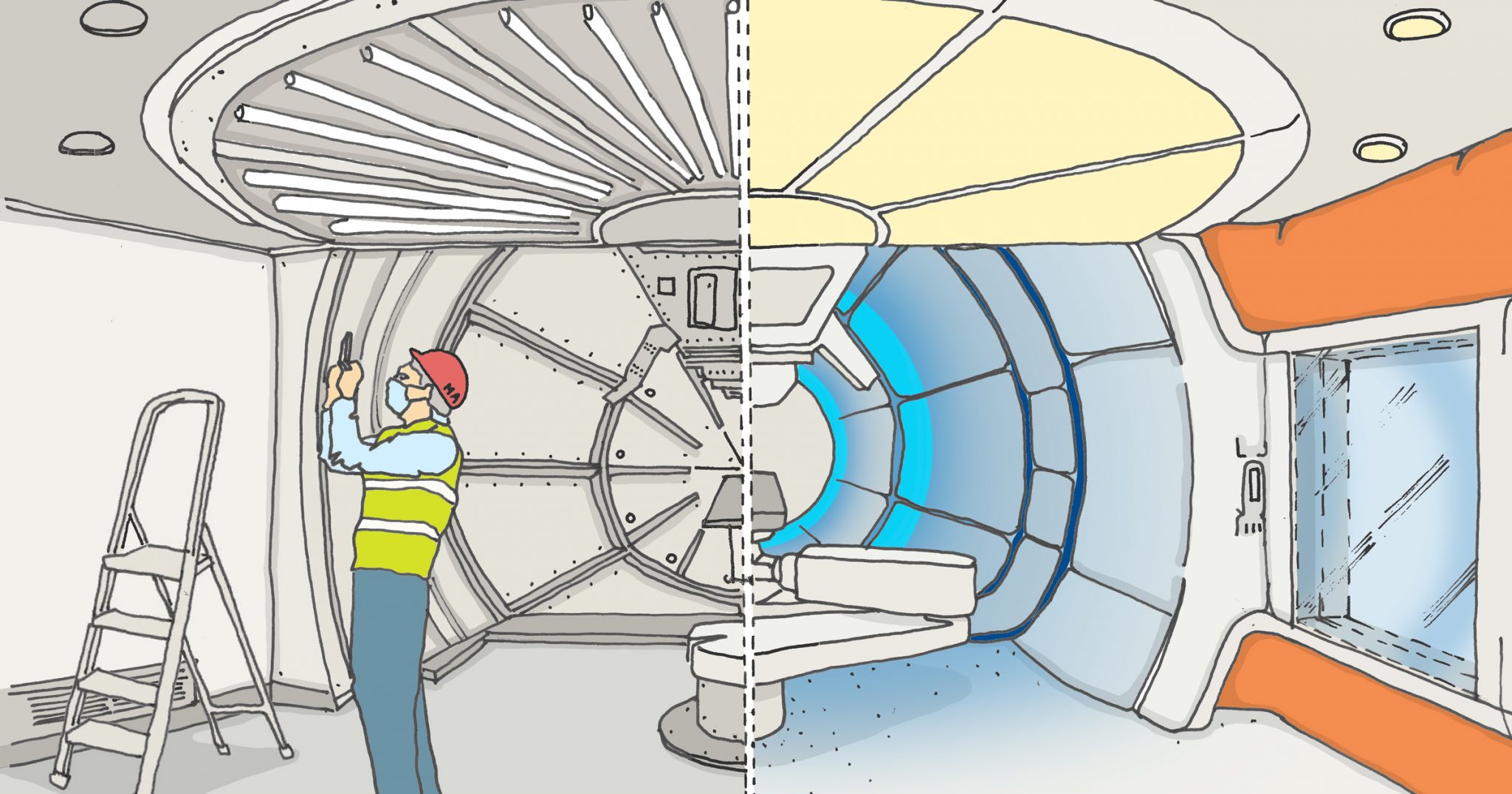
Our expertise in healthcare architecture means that we are often called upon to undertake advisory roles for clients that trust us to make the right judgements on their behalf, helping them to safely navigate the design and construction process.
We recently undertook such a role for the University College London Hospitals NHS Foundation Trust during the construction of their £380m Grafton Way Building, designed by Scott Tallon Walker Architects in association with Edward Williams Architects, and built by Bouygues UK. In this role, we were able to see the true value of collaboration between all members of a project team, on both the contractor and the client side, and the benefit of a robust approach to compliance inspection and auditing. Here we share some of our learnings from the process.

UCLH Grafton Way Building, designed by Scott Tallon Walker Architects in association with Edward Williams Architects. Image by Paul Raftery.
The University College Hospital Grafton Way Building is a unique healthcare facility. Together with the proton beam therapy treatment building commissioned and built in Manchester for The Christie NHS Foundation Trust, it leads the way in advanced cancer radiotherapy. The roots for both projects date back to 2012 when a decision had been made to develop not just one, but two, proton therapy centres in the UK. Due to its complexity, the UCLH proton beam therapy facility is the culmination of more than a decade of planning, design, and construction.
Proton beam therapy is a form of radiotherapy used to treat cancer. It uses a high energy beam of protons to deliver a dose of radiotherapy. Proton particles are particularly precise at targeting cancer cells and therefore cause minimal damage to healthy tissue. Highly specialized equipment is used to provide this treatment, more closely resembling equipment used in CERN than ordinary equipment we associate with medical interventions in hospitals. A cyclotron, surrounded by a thick layer of concrete and buried twenty meters underground in a maze-like concrete bunker, is the beating heart of the hospital.
A wide array of teams worked on the project. Each designer, consultant, specialist, contractor, and supplier, brought their unique knowledge and expertise in a common effort to deliver this flagship NHS facility, now serving patients in need of advanced lifesaving cancer treatment. It has been a huge undertaking, and many extraordinary stories could be told based on it.
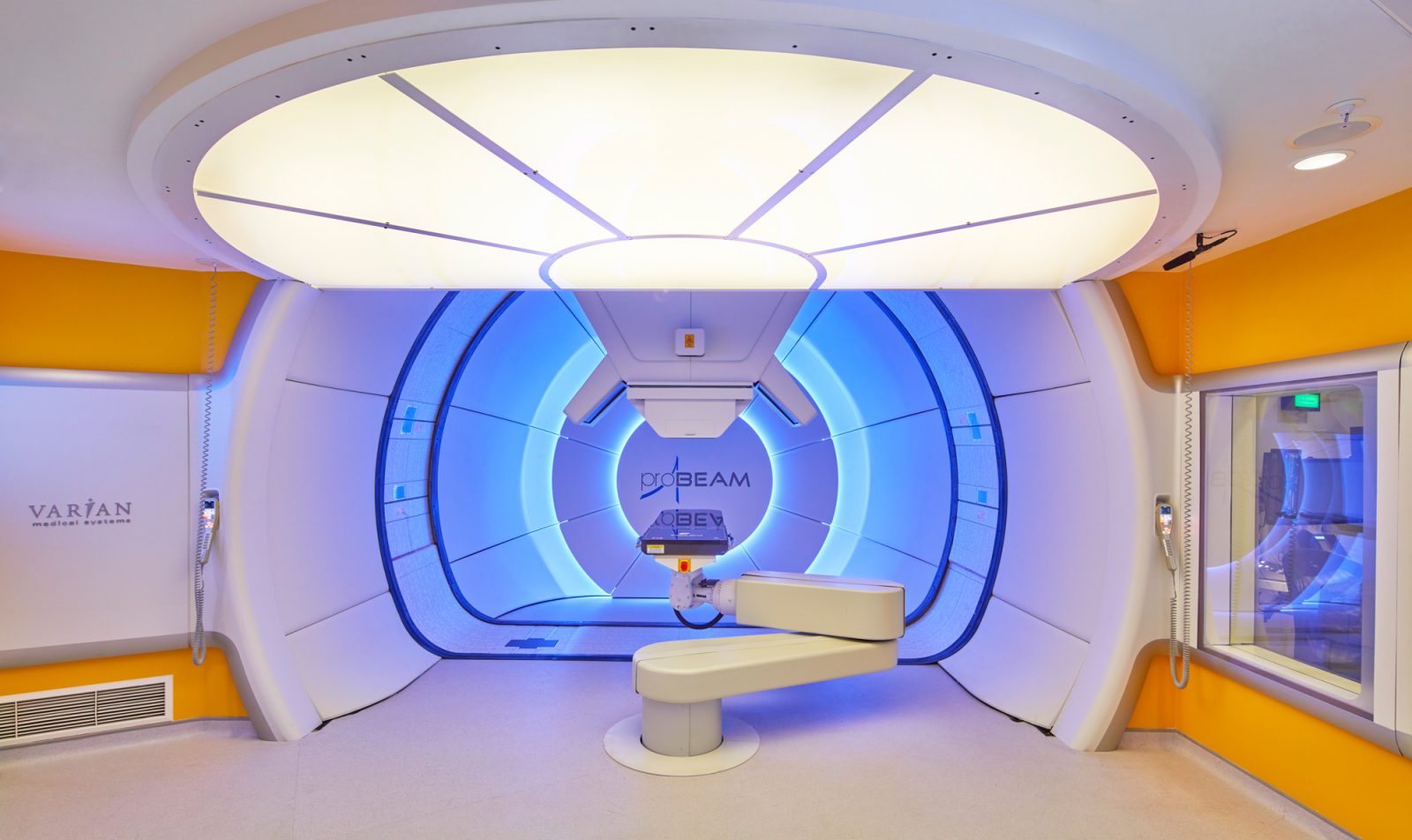
One of the building's ProBeam® proton therapy systems by Varian Medical Systems. Image by Paul Raftery.
Our role was to assist the client in inspections, verifying aspects of both contract and code compliance. These final stages, including handover, can be extremely important to the success of a project and for the future management of the building, and we approached the task with an understanding and appreciation of this.
Due to the size and complexity of the project, we were asked to concentrate purely on architectural aspects of the building, inspecting completed areas and reviewing them against the room data sheets and contract documentation. This required a detailed understanding of the relevant healthcare design codes and standards, as well as experience in contract fulfilment and project delivery. During this process we recorded any deviations and communicated this to the client. Quality of the documentation and document control standards adopted by the team were very important. On a project of this scale with hundreds of documents submitted and exchanged, it was critical to understand the status of each. Maintaining excellent document control standard compliance was incredibly helpful to all members of the team.
Little did we know … the challenges that would come our way – from a global pandemic to Brexit – let alone the sheer complexity of constructing a hospital above ground and installing life-changing proton beam therapy equipment below ground. Through problem-solving, strong governance, and project controls, we met an ambitious delivery programme and budget.
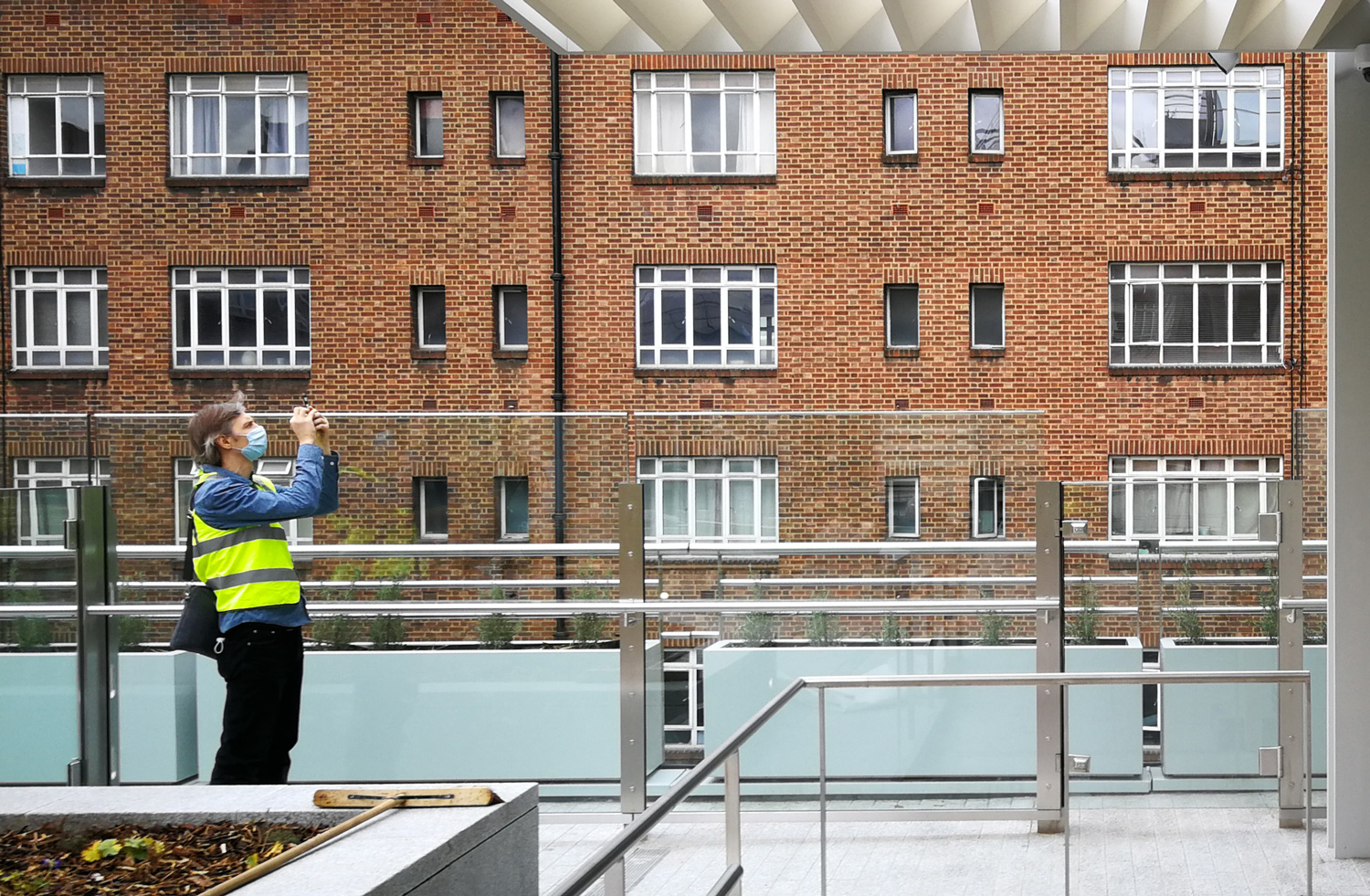
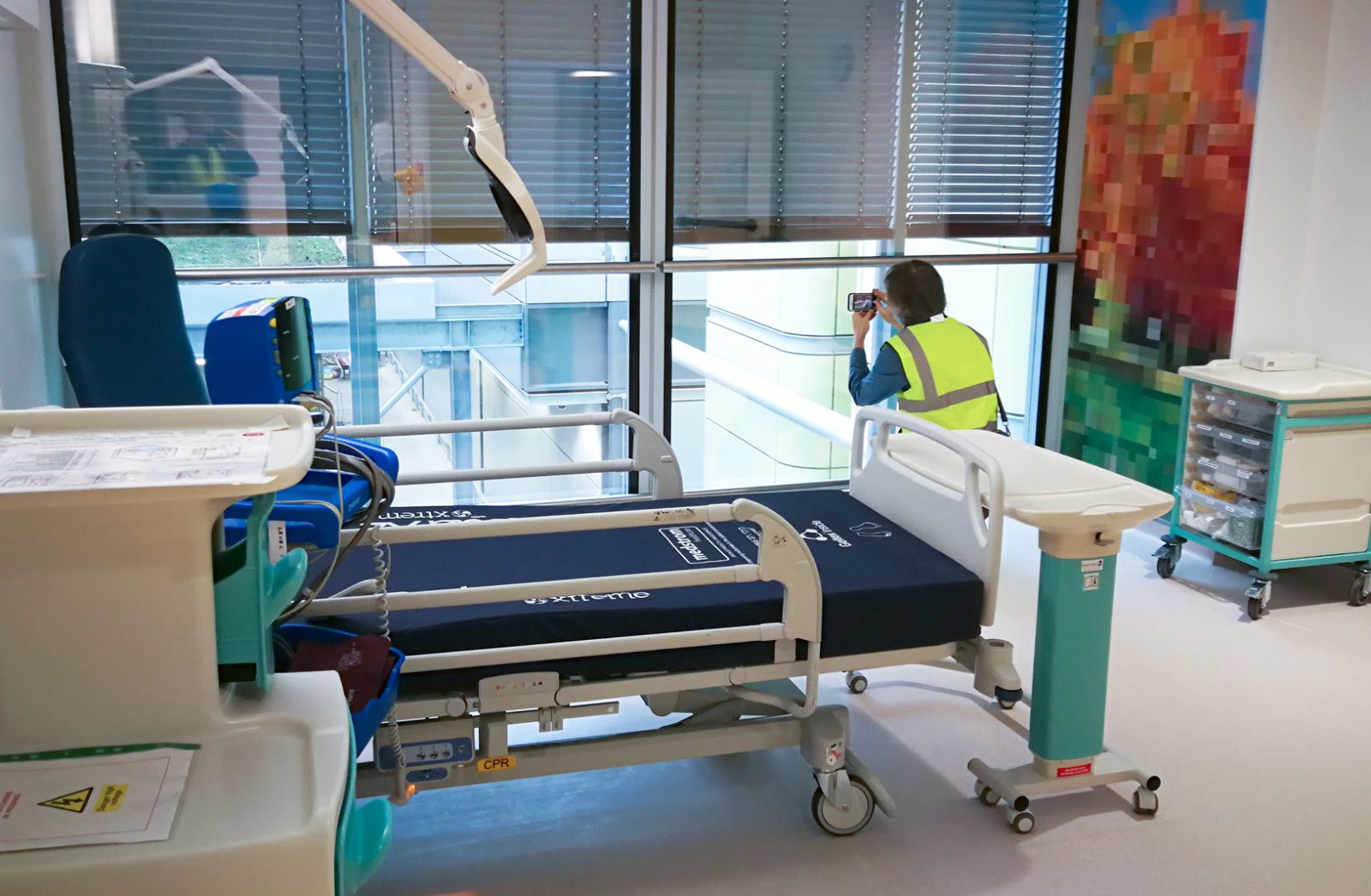
Over 1,100 rooms and spaces were inspected during the course of our commission.
In the process, we had to pay attention to previous contract communications and variations agreed between the client and contractor. This involved applying another level of scrutiny, including verifying compliance of the changes against current regulations and standards. For example, a simple change in the size of a wash hand basin could affect the remaining area of the room. Our role was to check it, understand the nature of the change and communicate any impact to the client.
Inspecting the proton beam therapy areas was particularly interesting. PBT treatment rooms were designed with specific requirements in mind, including equipment supplier needs, radiation safety and regulatory guidance. Ensuring safety for all users required adequate shielding, monitoring, sophisticated communication measures, and a robust access control strategy.

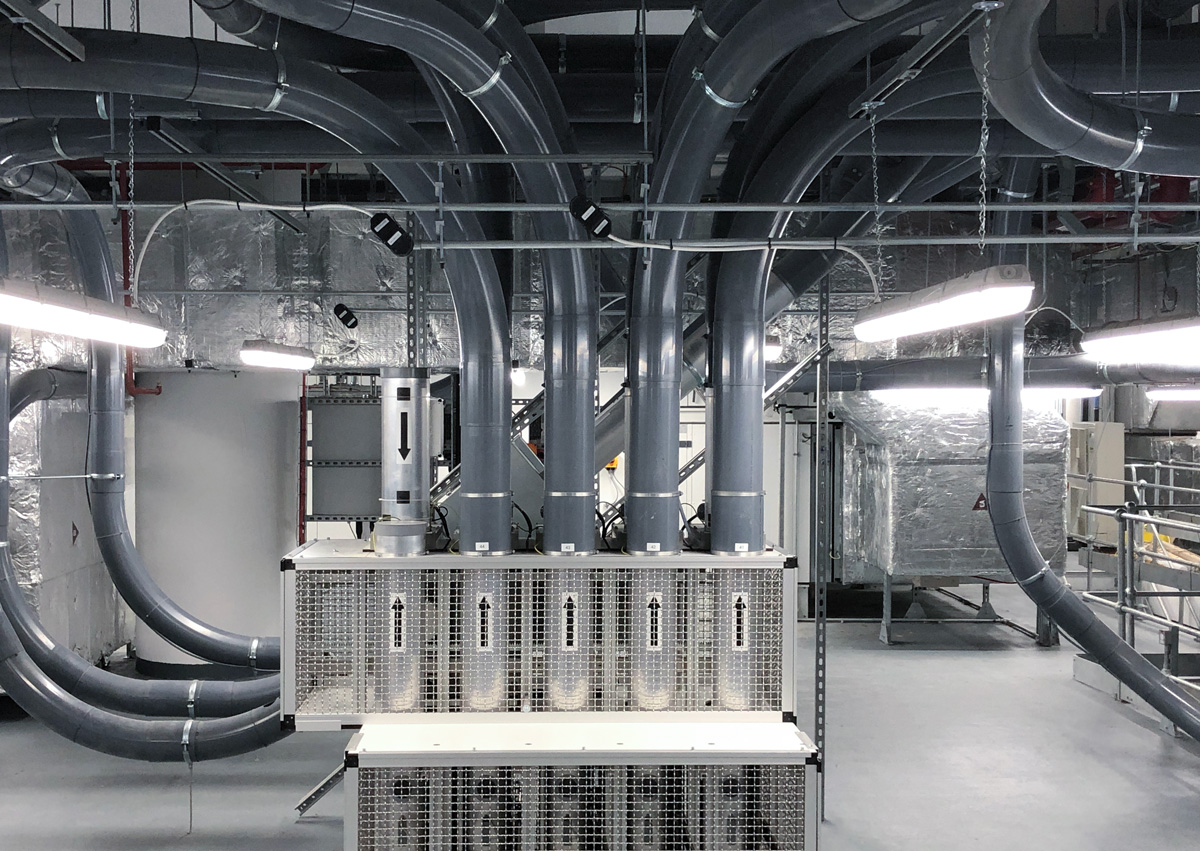
A building of this size and complexity required a thorough understanding of standards, regulations and technical details. The ProBeam® proton therapy system is supplied by Varian Medical Systems.
Working methodically, each room in the hospital was inspected, and all outstanding or non-compliant items were properly recorded and identified. In many instances, these items might appear fairly mundane: a missing socket, wall damage, an incorrect door lock type or a monitor positioned incorrectly within a room. Though in reality, however minor the item may seem in comparison with the complexity of the hospital’s advanced proton beam technology, all of these items form an important part of the fabric of the building, with consequences for its daily practical use in the future. Ask a healthcare professional to list the shortcomings in their workplace and often, these will be relatively small operational details, which, with foresight, could have been rectified, saving many a headache and frustration. In a project of this scale and complexity, with a large multi-faceted team of designers, consultants, and specialists, a fresh pair of experienced eyes can bring great value to the client in ensuring the best possible outcome is achieved.
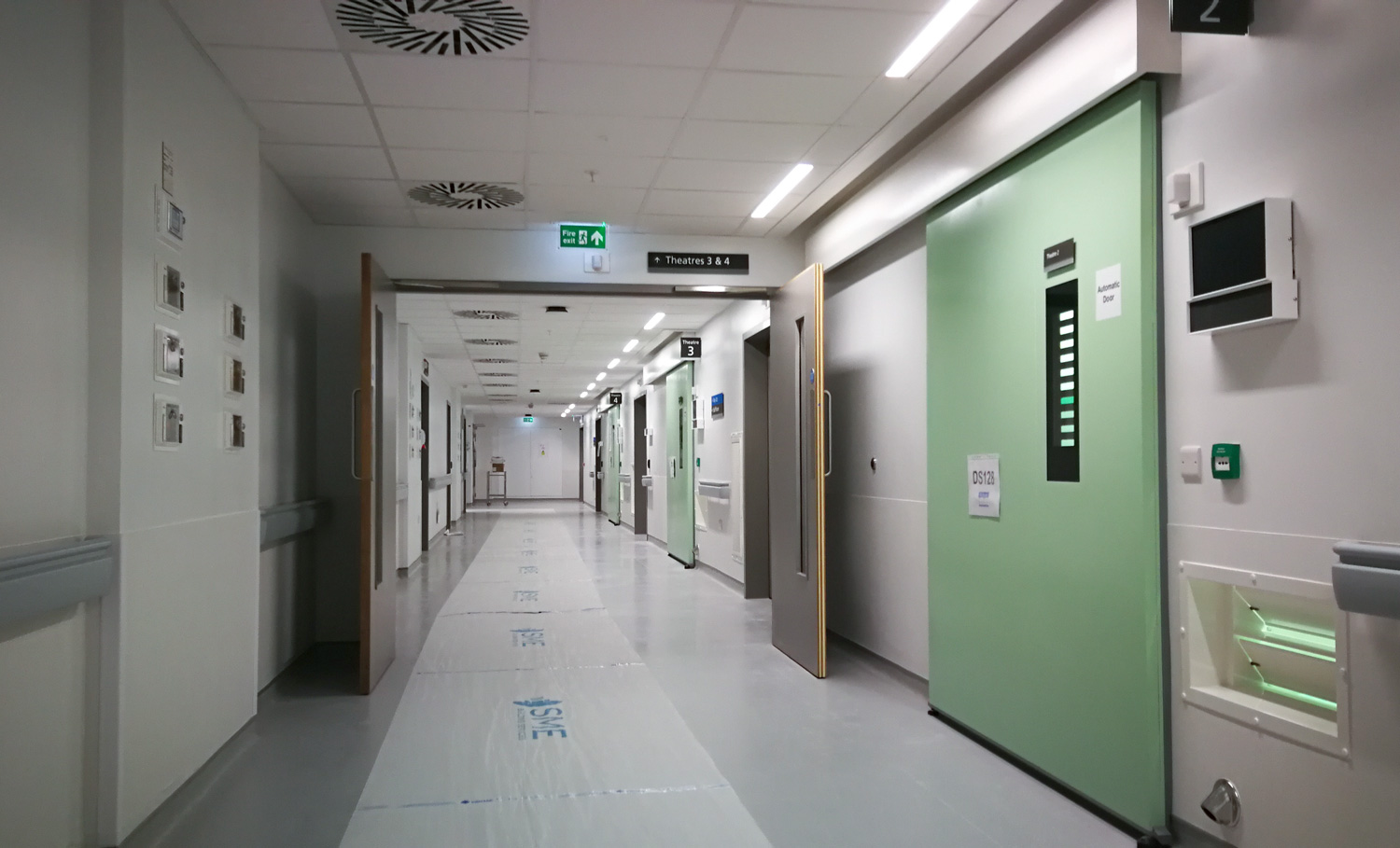

The building's operating theatres were included in the scope for inspection.
The huge scale of the project can be expressed in many ways, its significance to the client, the time scale needed for completion, its size (five levels below ground and six levels above ground), or its cost. The University College Hospital Grafton Way Building is a hugely significant achievement in all the aspects mentioned above. It has been a truly collaborative effort where communication and clear understanding of roles and responsibilities was a vital element of the process.
In terms of our role, the most critical aspect was to ensure the inspection and compliance process was transparent and accountable. Transparent in making it visible to all parties involved in the rectification process, and accountable by ensuring the status of the issues and the responsibility for addressing it, were well defined and communicated.
Resolving each observation could often involve multiple parties. Keeping the communication clear between all involved could have easily become one of the most difficult aspects. Thanks to excellent project management by AECOM and incredible communication with the client team, this in fact became a very reliable and efficient process. All derogations were properly recorded and logged, whilst issues could be only closed by an authorised person upon subsequent inspection and confirmation that the outstanding or non-compliant item was rectified. Each item was viewed with equal appreciation of its consequence to the outcome. This project is a worthy demonstration that every role is important, and that close, collaborative working can elevate the result for the client and all those that will use the building.
This new state-of-the-art facility for UCLH is one of the most complex public building projects ever undertaken. Its successful delivery is a result of collaboration, both among Bouygues colleagues, and with UCLH and the wider project team, and it is hugely rewarding to see the first patients beginning their treatment here, highlighting the potential this facility has to transform people’s lives.

As well as clinical spaces, public areas where also inspected and checked for compliance. Image by Paul Raftery.
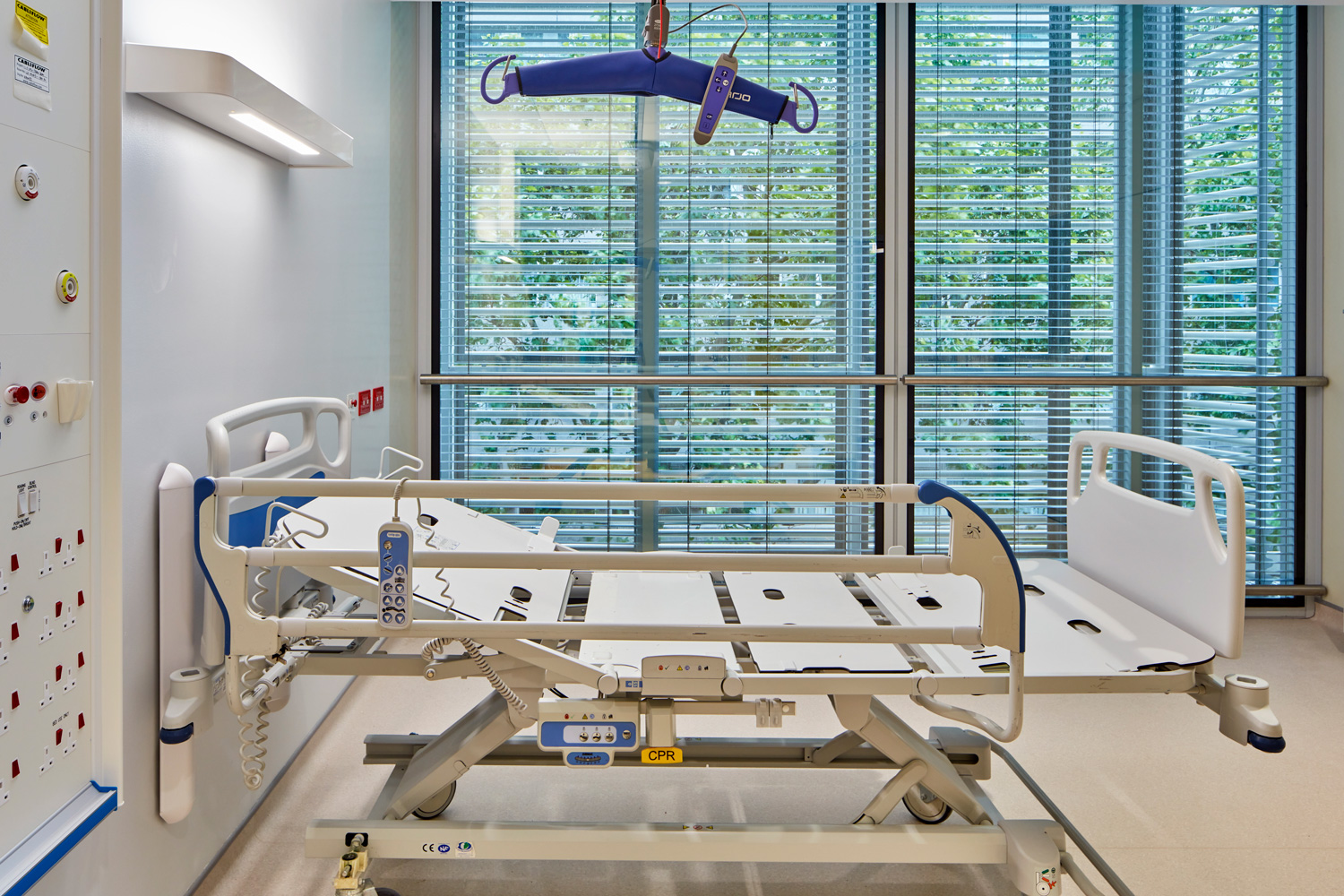
Collaboration of the entire project team ensured an exceptional outcome was achieved. Image by Paul Raftery.
In total, we inspected more than 1,100 rooms. The project was delivered in the most difficult and challenging circumstances of the Covid-19 pandemic and lockdown restrictions. There was rarely a more urgent time for national services, rarely a time more difficult. It took us a considerable amount of time to complete all inspections as we were following and adjusting our activities to align with the construction programme. This extended timeframe meant that rooms were being inspected at different times and different stages of completion, with changes occurring between inspections. A robust system of recording and tracking of items was essential to ensure that items would not become lost or assumed complete, as time passed. A suite of tools that we developed specially for this scheme, helped to manage this process, and avoid duplication or error.
In the end, the project was a truly remarkable example of a collaborative effort. Each team bringing a huge amount of hard work and skill to their contribution. Our role in the final stages of the project brought to the client team a level of assurance that compliance was being achieved, and that they were well informed when making key decisions in the concluding steps. It was a great honour to have played a small role in the creation of this outstanding facility and we commend the designers, consultants, specialists, contractors, and suppliers that made it all possible.
I am immensely proud of the Grafton Way Building. … This was a complex building programme, made more so with the final stages taking place during the global pandemic, and I congratulate everyone involved.
We explore the challenges presented by an aging healthcare estate and the role of strategic estate planning in deciding if we should build new and replace or reuse and update.